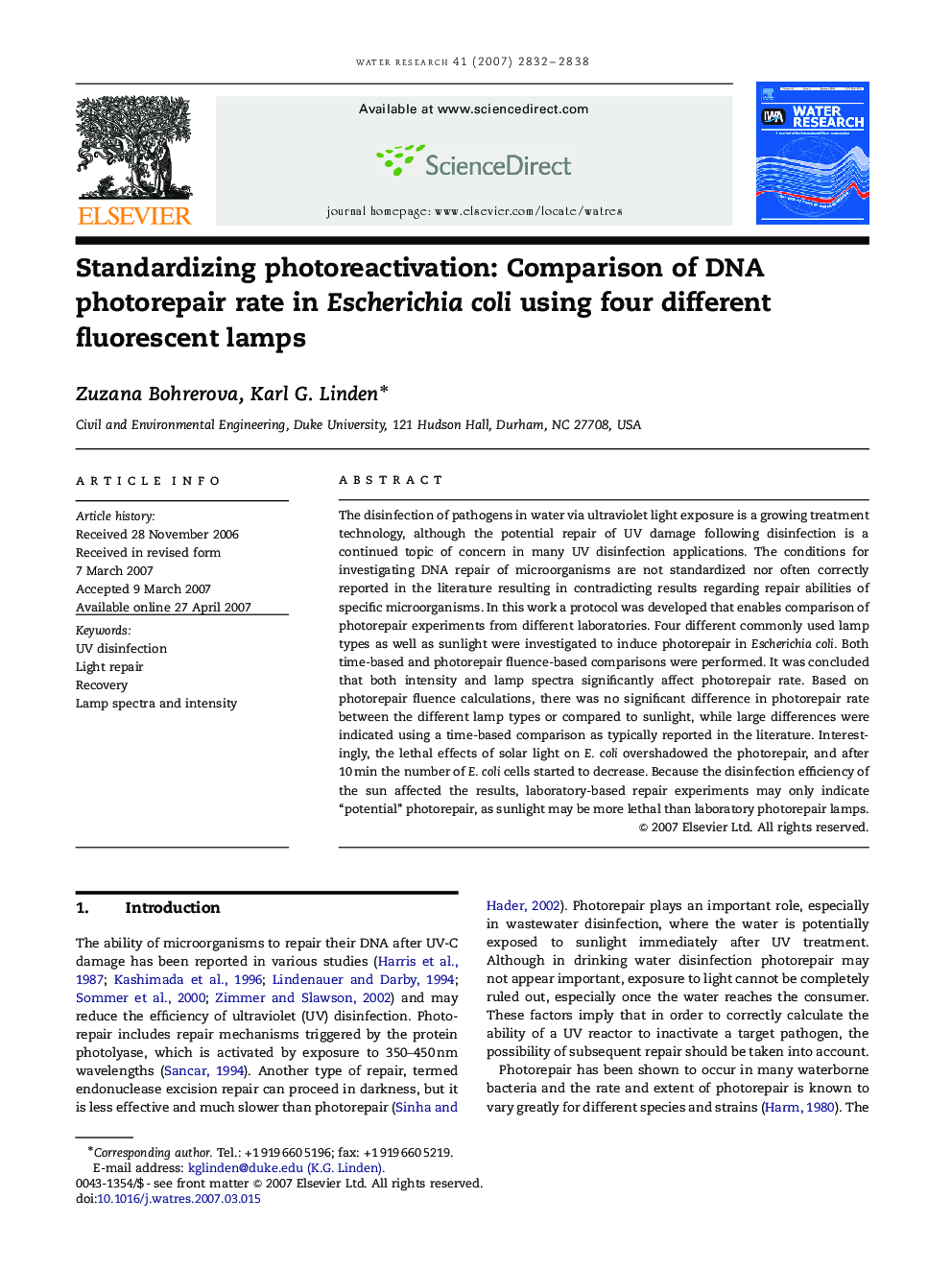| Article ID | Journal | Published Year | Pages | File Type |
|---|---|---|---|---|
| 4486370 | Water Research | 2007 | 7 Pages |
The disinfection of pathogens in water via ultraviolet light exposure is a growing treatment technology, although the potential repair of UV damage following disinfection is a continued topic of concern in many UV disinfection applications. The conditions for investigating DNA repair of microorganisms are not standardized nor often correctly reported in the literature resulting in contradicting results regarding repair abilities of specific microorganisms. In this work a protocol was developed that enables comparison of photorepair experiments from different laboratories. Four different commonly used lamp types as well as sunlight were investigated to induce photorepair in Escherichia coli. Both time-based and photorepair fluence-based comparisons were performed. It was concluded that both intensity and lamp spectra significantly affect photorepair rate. Based on photorepair fluence calculations, there was no significant difference in photorepair rate between the different lamp types or compared to sunlight, while large differences were indicated using a time-based comparison as typically reported in the literature. Interestingly, the lethal effects of solar light on E. coli overshadowed the photorepair, and after 10 min the number of E. coli cells started to decrease. Because the disinfection efficiency of the sun affected the results, laboratory-based repair experiments may only indicate “potential” photorepair, as sunlight may be more lethal than laboratory photorepair lamps.
